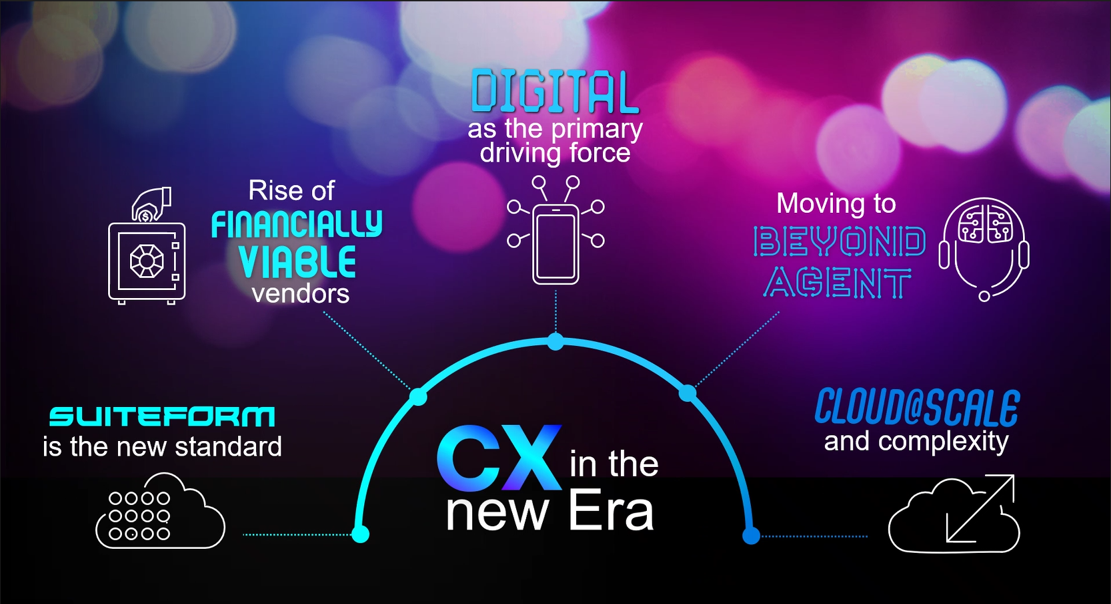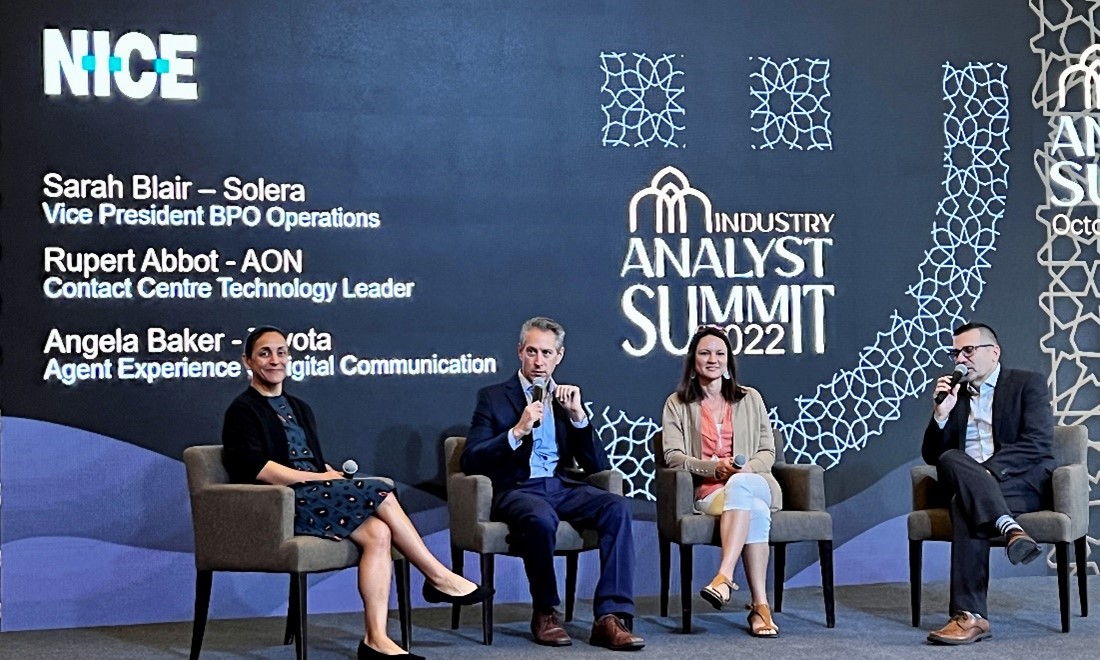If you are in the customer experience business and pay any attention to social media, you no doubt are aware that NICE held its annual industry analyst meeting in
Marrakech, Morocco last week. In addition to a spectacularly memorable locale, those in attendance were treated to two days of executive presentations mapping out the company’s strategic directions for the next few years.
Unlike many strategic plans that seem to change with the seasons, Barak Eilam, CEO of NICE, built and expanded upon his 2021 vision, detailed in my No Jitter post that followed last year’s analyst summit,
Beyond CCaaS + WFO to CXi.
Eilam posited that what we are experiencing right now is the transition from one era to the next. The last era began in 2000, after the tech bust. The last twenty years has brought the rise of the internet and all of the changes it has wrought in our business and personal lives. The graphic below summarizes the topics Eilam believes will define the next era. All are self-explanatory save one, suiteform.
Eilam defined "suiteform" as the combination of a suite and a platform, which will be “the new standard moving forward.” NICE’s and Genesys’s CCaaS solutions aren’t given enough credit for being a combination of both of these attributes today. While each has a full suite of customer experience applications, they also offer APIs and other types of connections to hundreds of additional enterprise software applications, notably CRM and natural language and AI platforms, e.g., Amazon Lex and Google CCAI.
I believe the point Eilam and NICE are making by coining the term suiteform is that going forward, enterprise customers will come to understand and value the necessary platform elements of CCaaS solutions. Note, some vendors might posit that having integrated CPaaS capabilities gives their CCaaS suiteform characteristics. I would counter that the depth of open APIs of the CCaaS leaders takes integration within customer experience to a level not typically available with today’s CPaaS suites.
But how do NICE customers react to this new term of art suiteform? I asked the customer panel at the Industry Analyst Summit this question: “For those of you who are familiar with the term that was introduced at this meeting, suiteform, do you feel like that is the way that you've already been using the CXone platform, using APIs to integrate with internal and external apps? Or is it a new way of thinking about how you might use CXone?”
The panel participants then responded with a catalog of benefits of a fully featured CX suite, followed by a description of where each saw their company in the journey to a full suite deployment.
Sara Blair, VP of BPO operations for Solera, is already using many of the component applications of the CXone suite. “It’s really easy and its efficient,” she commented about choosing a suite. She went on to say that the CXone platform has enabled Solera to truly deliver omnichannel service to consumers.
Rupert Abbot, contact centre technology leader for AON, described the financial services firm as being much earlier in its journey. While AON is not using CXone AI today, he discussed the fact that AI is a well-accepted technology within the firm – to develop and deliver financial products for its customers. He can therefore see expanding the current use of CXone by AON to include some of the more sophisticated components of the suite over time.
Angela Baker, digital information officer, agent experience & digital interactions for Toyota North America, discussed the barriers to achieving a full suite deployment during the panel and in other conversations at the summit. Understandably, the “if it’s not broke, don’t fix it” attitude about technology is strong within any business. While those in CX leadership may fully appreciate that there are more advanced technologies available to address consumer and agent journeys, change doesn’t happen as quickly as CX leaders would like.
My takeaway from the panel conversation was that companies see real value in a suite of CX applications but also recognize that moving to a suite is a journey. As part of that journey, it’s important for companies to have the option to remain on existing technology until it achieves end-of-life status. It is also important for CX vendors to have and communicate the capabilities of a full suite, as individual solution choices will often be made based on the total suite. In that journey, the platform capabilities of a CX suite become most salient – connecting with what has already been deployed.










